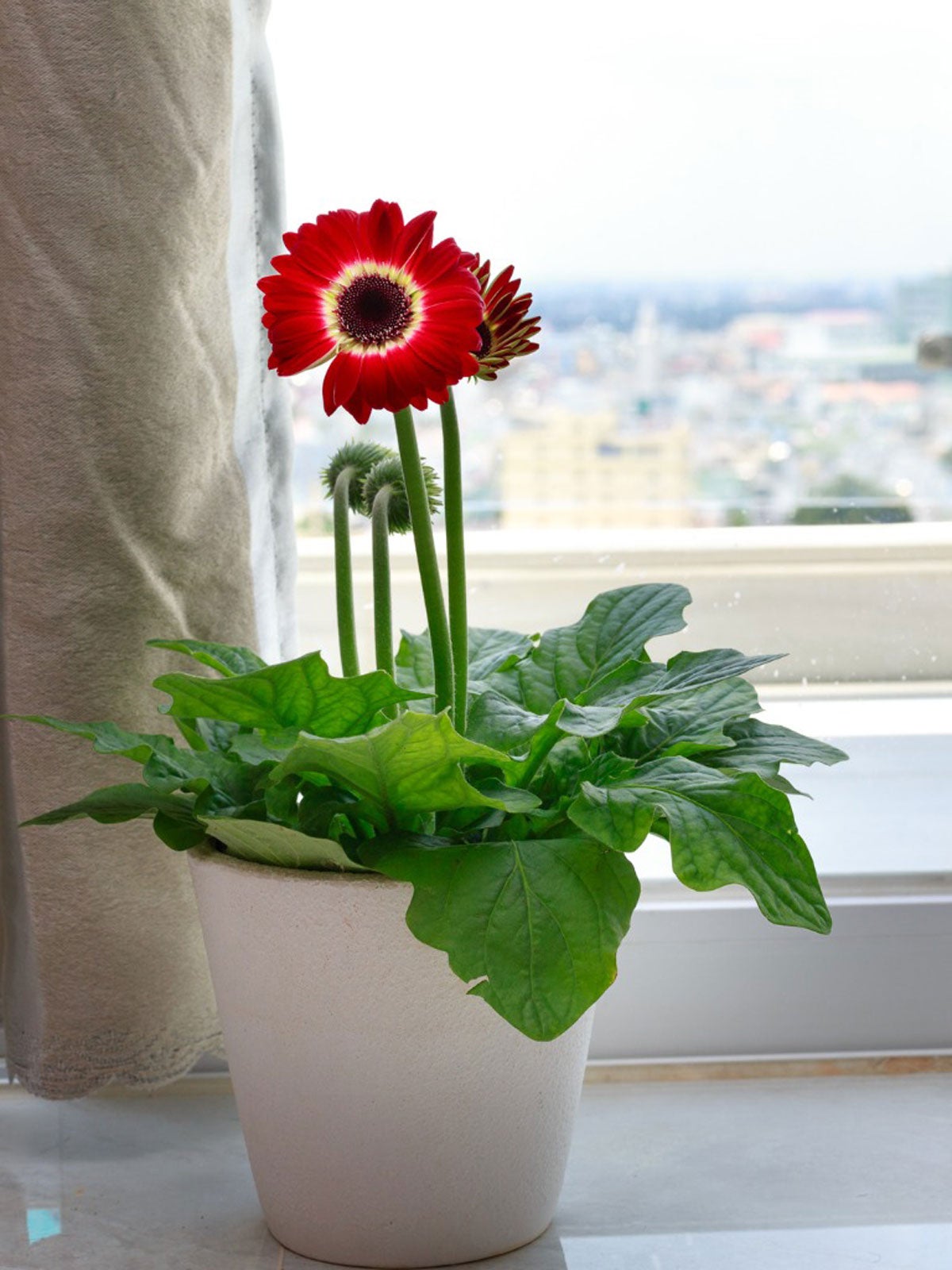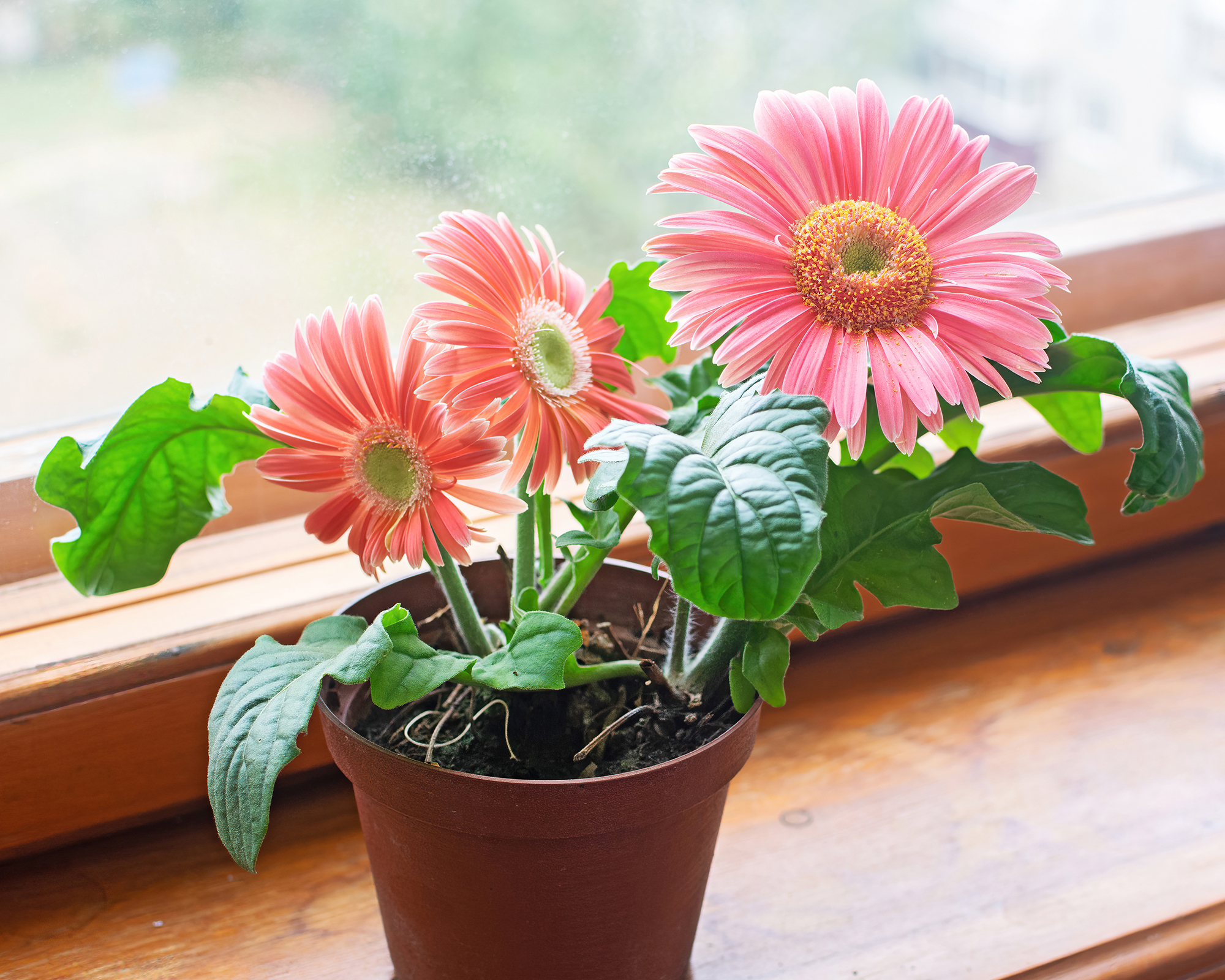Gerbera Daisy Winter Care: How To Overwinter Gerbera Daisies In Containers


Gerbera daisies, also known as gerber daisies, African daisies, or Transvaal daisies, are gorgeous, but they’re easily damaged or killed by frost. It’s difficult to turn your back on these beauties when temperatures drop in autumn, but gerbera daisies tend to be a little on the finicky side. Keeping gerbera daisies in winter isn’t always easy or successful, but it’s definitely worth a try.
Read on for tips on how to overwinter gerbera daisies as houseplants.
Gerbera Daisy Winter Care
There are a couple ways to care for gerbera daisies in winter. You can treat a gerbera as a regular indoor plant, or you can let it go partly dormant during the winter months. Take a look at the following tips on both methods of overwintering potted gerberas.
- Dig the gerbera daisy, pot it in a container filled with high quality potting mix, and bring it indoors when nights drop below 40 degrees F. (4 C.).
- It’s helpful to acclimate the plant little by little to minimize stress caused by a sudden change. Bring the plant indoors at night and take it outdoors during the day. Decrease outdoor time gradually, as long as daytime temps are above 60 degrees F. (16 C.).
- Place the plant in a sunny window, but not in intense, bright light. Indirect light is better for gerbera daisies. Although gerbera daisies can tolerate chilly temps for short periods of time, room temperatures of around 70 degrees F. (21 C.) are ideal for overwintering potted gerberas.
- Water the plant whenever the top ½ inch (1 cm.) of potting soil feels dry to the touch, usually every three to five days, depending on room temperature and humidity.
- Your daisy may not bloom during the winter. However, if it does, trim blooms as soon as they fade. Return the plant outdoors when the days are getting warmer and all danger of frost has passed.
What to Do with Gerbera Daisies in Winter Dormancy
Pot the plant and bring it indoors in autumn, as directed above. Put the pot in a cool basement or a room with a north-facing window.
Reduce water during fall and winter, providing only enough moisture to keep the potting mix from becoming bone dry.
Bring the gerbera back into light and warmth when the plant resumes healthy growth in spring.
Gardening tips, videos, info and more delivered right to your inbox!
Sign up for the Gardening Know How newsletter today and receive a free copy of our e-book "How to Grow Delicious Tomatoes".

A Credentialed Garden Writer, Mary H. Dyer was with Gardening Know How in the very beginning, publishing articles as early as 2007.
-
 Looking For Plants To Give You The Soft And Fuzzies? Try These 5 Fuzzy Leaf Plant Options
Looking For Plants To Give You The Soft And Fuzzies? Try These 5 Fuzzy Leaf Plant OptionsLovers of texture, drama, silver foliage and tactile plants will adore these special sensory garden additions. These fuzzy leaf plant options will leave you all aglow
By Susan Albert
-
 Get Ready For A Summer Of Hummers! Grow These Full Sun Hummingbird Plants and Flowers
Get Ready For A Summer Of Hummers! Grow These Full Sun Hummingbird Plants and FlowersIf you’re lucky enough to enjoy a sunny backyard, make sure you are maxing out on your pollinator opportunities and grow these full sun hummingbird plants and flowers
By Tonya Barnett
-
 Gerbera Daisy Indoor Care: Complete Growing Guide
Gerbera Daisy Indoor Care: Complete Growing GuideWith their bright, showy flowers, gerbera daisies make popular houseplants. Learn how to care for them effectively – and how to tackle common growing issues.
By Mary H. Dyer
-
 Gerbera Daisy Care - Tips On How To Grow Gerbera Daisies
Gerbera Daisy Care - Tips On How To Grow Gerbera DaisiesGerbera daisies are commonly grown for their bright and cheerful daisy-like flowers. Get information on growing gerbera daisy flowers in this article so you can enjoy them in your garden.
By Gardening Know How